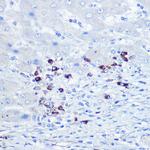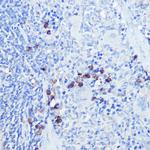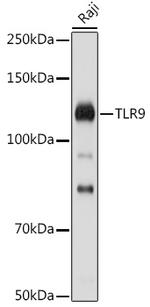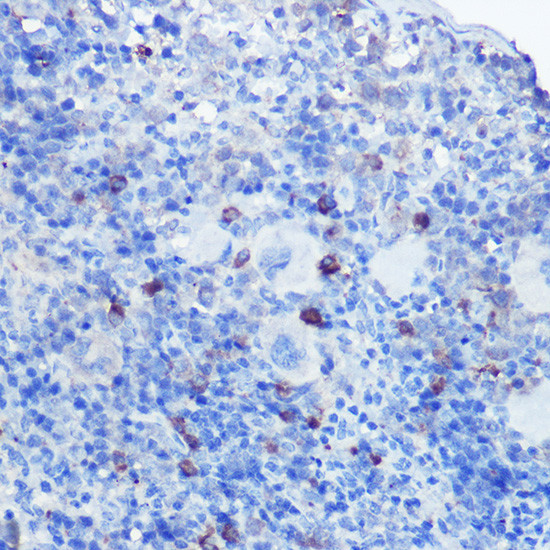Search Thermo Fisher Scientific
FIGURE: 1 / 4
TLR9 Antibody (PA5-89960) in IHC (P)




Product Details
PA5-89960
Species Reactivity
Host/Isotype
Class
Type
Immunogen
Conjugate
Form
Concentration
Purification
Storage buffer
Contains
Storage conditions
Shipping conditions
RRID
Product Specific Information
Positive Samples: Mouse spleen, Rat spleen; Cellular Location: Cytoplasmic vesicle, Endoplasmic reticulum membrane, Endosome, Lysosome, Single-pass type I membrane protein, phagosome
Immunogen sequence: FPGLRYVDLS DNRISGASEL TATMGEADGG EKVWLQPGDL APAPVDTPSS EDFRPNCSTL NFTLDLSRNN LVTVQPEMFA QLSHLQCLRL SHNCISQAVN GSQFLPLTGL QVLDLSHNKL DLYHEHSFTE
Target Information
The protein encoded by this gene is a member of the Toll-like receptor family which plays a fundamental role in pathogen recognition and activation of innate immunity. TLRs are highly conserved from Drosophila to humans and share structural and functional similarities. They recognize pathogen-associated molecular patterns that are expressed on infectious agents, and mediate the production of cytokines necessary for the development of effective immunity. The various TLRs exhibit different patterns of expression. This gene is preferentially expressed in immune cell rich tissues, such as spleen, lymph node, bone marrow and peripheral blood leukocytes. Studies in mice and human indicate that this receptor mediates cellular response to unmethylated CpG dinucleotides in bacterial DNA to mount an innate immune response.
For Research Use Only. Not for use in diagnostic procedures. Not for resale without express authorization.
References (0)
Bioinformatics
Protein Aliases: CD289; Toll-like receptor 9
Gene Aliases: CD289; TLR9; UNQ5798/PRO19605
UniProt ID: (Human) Q9NR96, (Mouse) Q9EQU3
Entrez Gene ID: (Human) 54106, (Rat) 338457, (Mouse) 81897

Performance Guarantee
If an Invitrogen™ antibody doesn't perform as described on our website or datasheet,we'll replace the product at no cost to you, or provide you with a credit for a future purchase.*
Learn more
We're here to help
Get expert recommendations for common problems or connect directly with an on staff expert for technical assistance related to applications, equipment and general product use.
Contact tech support
